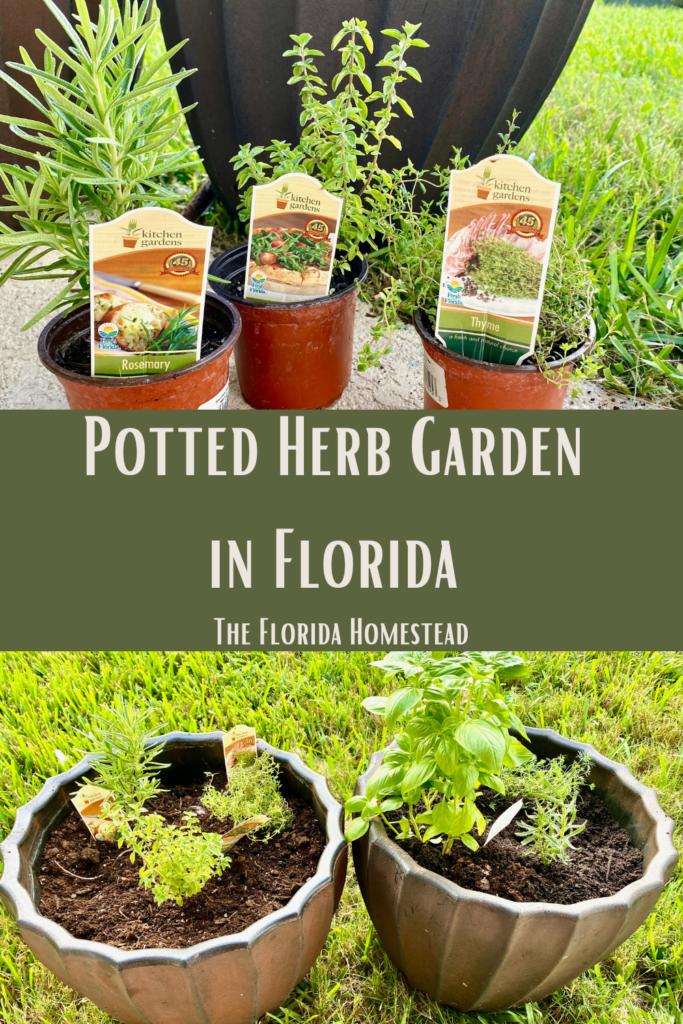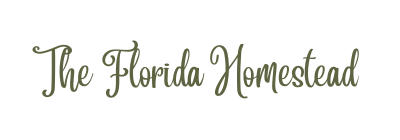Is there anything better than the aromatic smell of fresh herbs? Walking outside to the back porch and smelling the fragrance of fresh basil, lavender, and thyme was an experience I was missing since we moved into a rental. It was time to add a few herb pots to the backyard.
In Florida we can often run into hot weather for prolonged periods of time. Everyone knows the the summer can be brutal, but heat can linger into December. We have an advantage due to our east facing backyard. This puts the hottest sun on the other side of the house and creates a shady backyard in the afternoon which will help prevent wilting in the hotter months. Pots are also helpful to move the herbs around if needed to create a better environment.
Needed Items
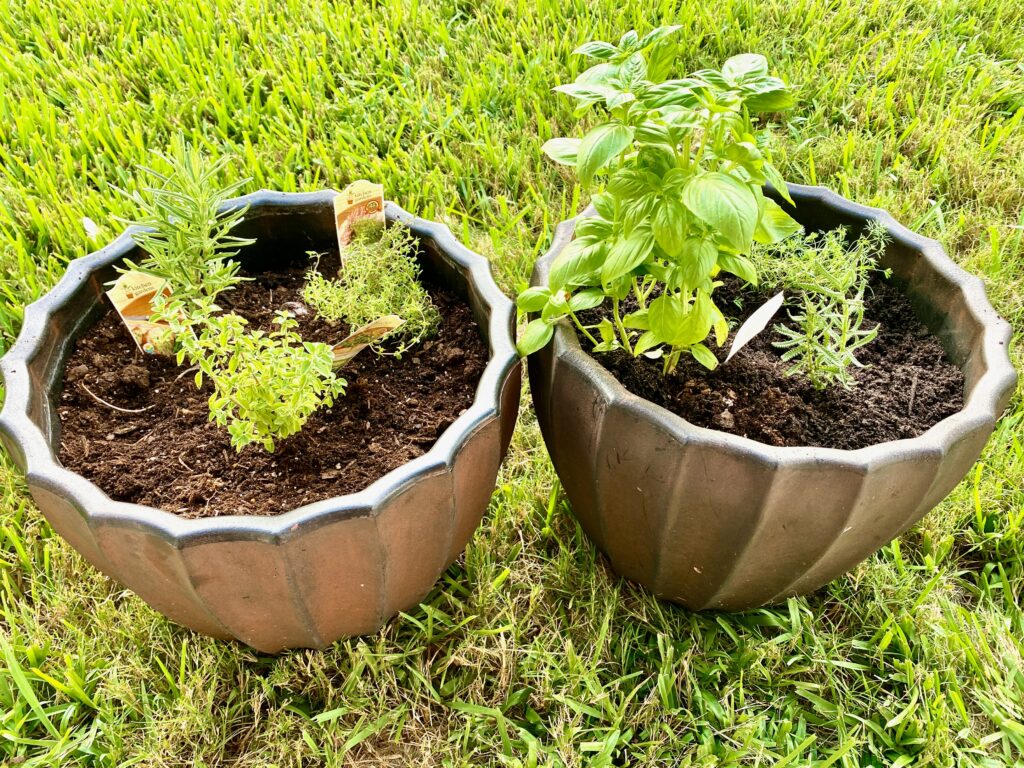
The items you need to have on hand to create your very own herb garden
- A nice deep pot is key. Pots dry out very easily especially with the intense heat from the beating sun. Having a deeper pot will allow the herbs to retain more moisture. Something like this pot would work well.
- Potting soil – I picked up a outdoor organic potting mix from Home Depot called Kellogg Garden Organics All Natural Potting MIx.
- Quality herbs – you can get them from an big box store like Home Depot, Lowes, or Wal-Mart. But I highly recommend going to a great local nursery. I find that the plants are in much better condition and are often cheaper. I got plants from my favorite nursery Earthbox Garden Center in Manatee County.
Herbs To Consider
I picked the following six herbs which have some great uses in our home from wonderful smells to delicious culinary uses.
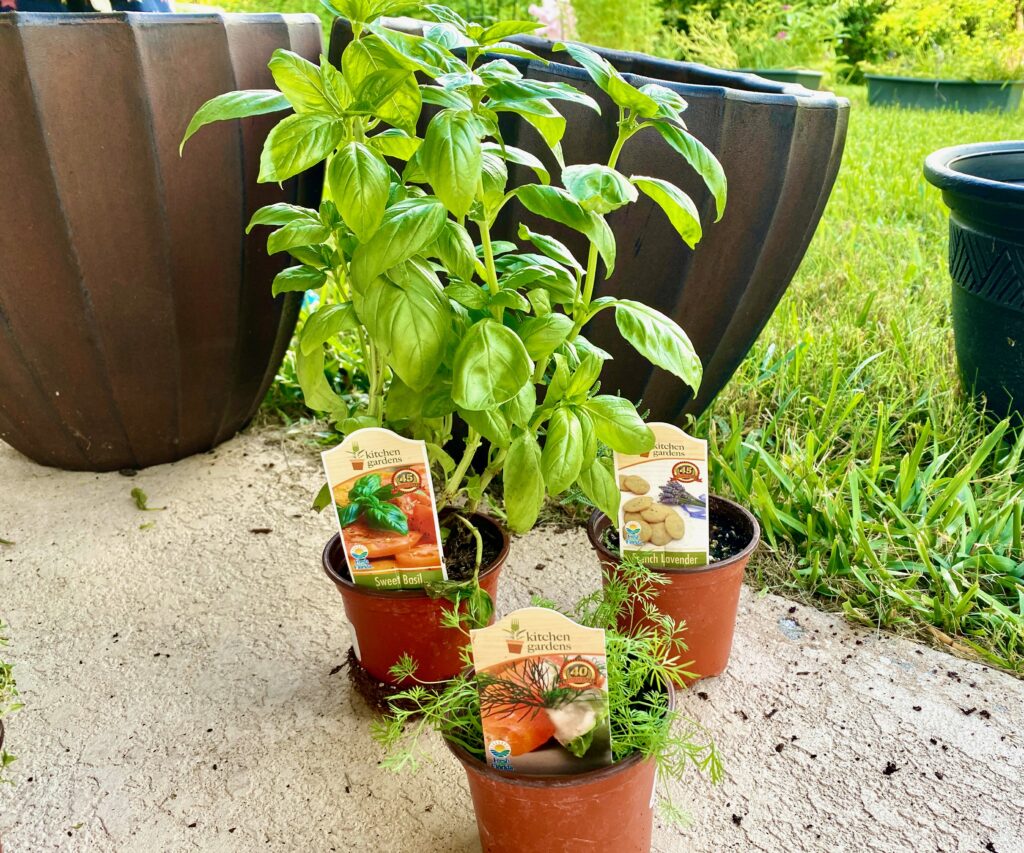
- Sweet Basil – I recently learned it is part of the mint family! I think it is one of the most popular herbs for growing and eating. Sweet Basil is great in all kinds of Italian dishes from pasta sauce to garnish on many dishes, and don’t forget the pesto! I would love to try a few of the different flavors in the near future like Thai basil, lemon basil, and lime basil. Always harvest basil from the top. It is tempting to just pull off the large leaves at the bottom, but harvesting from the top will encourage the plant to produce more leaves. It is an annual, but can behave as a perennial with the right care.
- English Lavender – this one is an experiment for me. I’m hoping to not only get some pretty flowers, but also some fun aromatic uses and maybe even culinary. According to some research I’ve done this plant doesn’t do well past USDA Hardiness Zone 8. I live in Zone 9b. I anticipate that it may be a struggle, but I hope to help it survive. it is a perennial that enjoys lots of sun and well draining soil.
- Dill – I don’t have the best luck with growing dill, but I love using it in so many dishes including condiments. (It should come to no surprise I had to replace my dill plant after 2 weeks.) Ranch is a particular favorite as well as in pickling recipes. It is a member of the parsley family and is a perennial herb. One other thing to look out for is that dill is a host plant for the black swallowtail butterfly. Many in the parsley family are incredible host plants for butterflies, and I have had them decimated by the caterpillars before. If I notice them I’ll probably plant more plants to accommodate our fluttery friends.
- Oregano – Known as the “pizza herb” and a widely used culinary and medicinal herb. I love using oregano in Italian dishes as well as Mexican dishes. I find myself using dried oregano in particular for so many different dishes. This plant does love full sun and a well drained soil. Harvesting just as the flower buds bloom is known to bring about the best flavor in this hardy perennial
- Thyme – Fantastic for seasoning poultry. As a perennial plant, thyme also does well in full sun and a well drained soil. If you are wanting to grow herbs for drying it has some of the best flavor retention of other herbs. It is recommended to harvest when it is blooming and to remove the top 1/3rd of the plant.
- Rosemary – A hardy fragrant herb that not only enhances cooking, but also your landscape. Rosemary is pretty easy to grow perennial and responds well to drought. This is good news if you forget to water your plants regularly. The best part of rosemary is how versatile it is as a seasoning. Not only is rosemary delicious on pretty much all cuts of meat from the humble chicken to a luxurious steak, but on vegetables like potatoes. As an herb it is fantastic used fresh, and equally delicious dried.
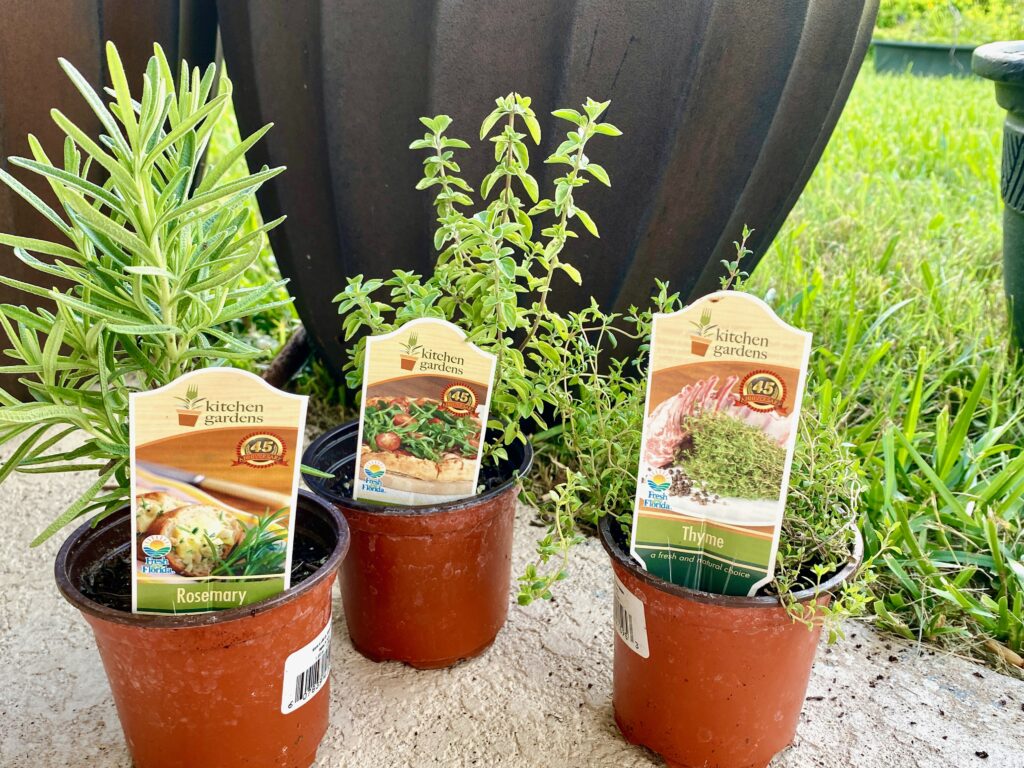
What I used
I utilized pots that I already had, but there are so many different ways to create the herb garden, from a large round pot, to an earth box, and even a small pot window garden.
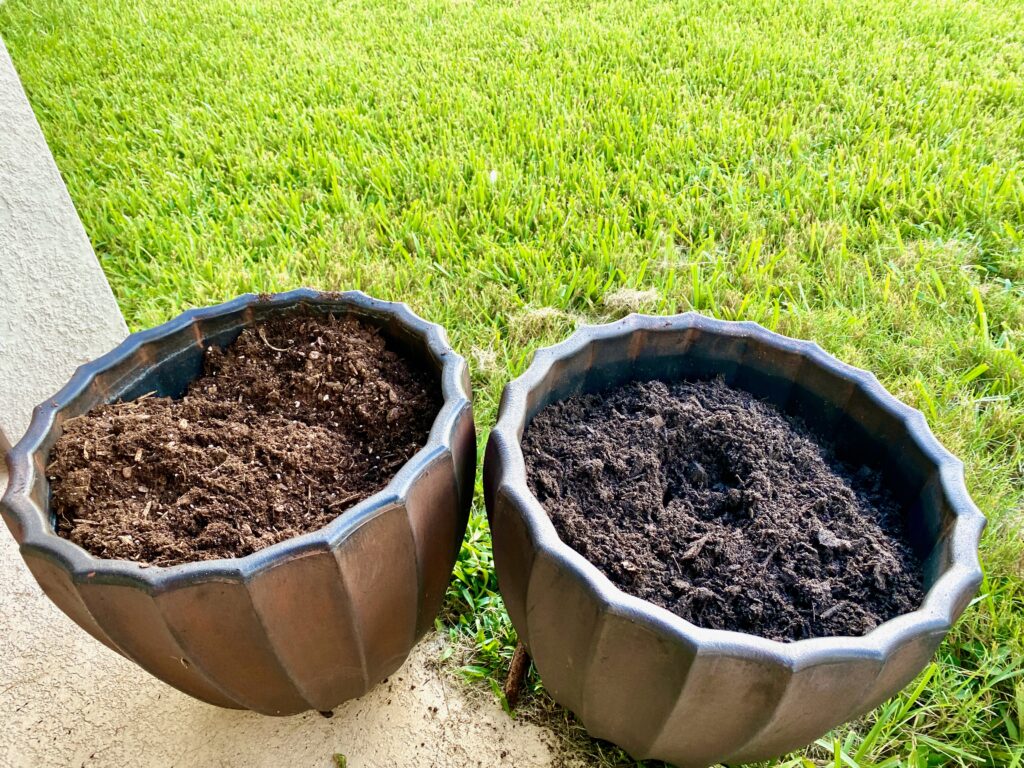
The next thing to decide is what to plant together. I didn’t think about this when I was picking up mine, and just chose what I wanted to have. But that is another key point pick out herbs that you regularly use first. Then you can experiment with other herbs that you either hope to use or want to begin to experiment with.
I decided to put the Oregano, Thyme, and Rosemary together as they are known to enjoy drier conditions. The Basil and Dill should do okay together even though basil for sure likes a wetter environment. The English Lavender is a wildcard and I know it prefers well drained soil, but may need a bit of extra water to survive in Central Florida.
I filled my pots with soil. Created spots to place the plants. I like to break up the roots a little bit at the base of the soil after I take the plant out of the pot. Cover up any extra spaces around the plants, and water well. These steps should give these herbs the ideal environment to thrive.
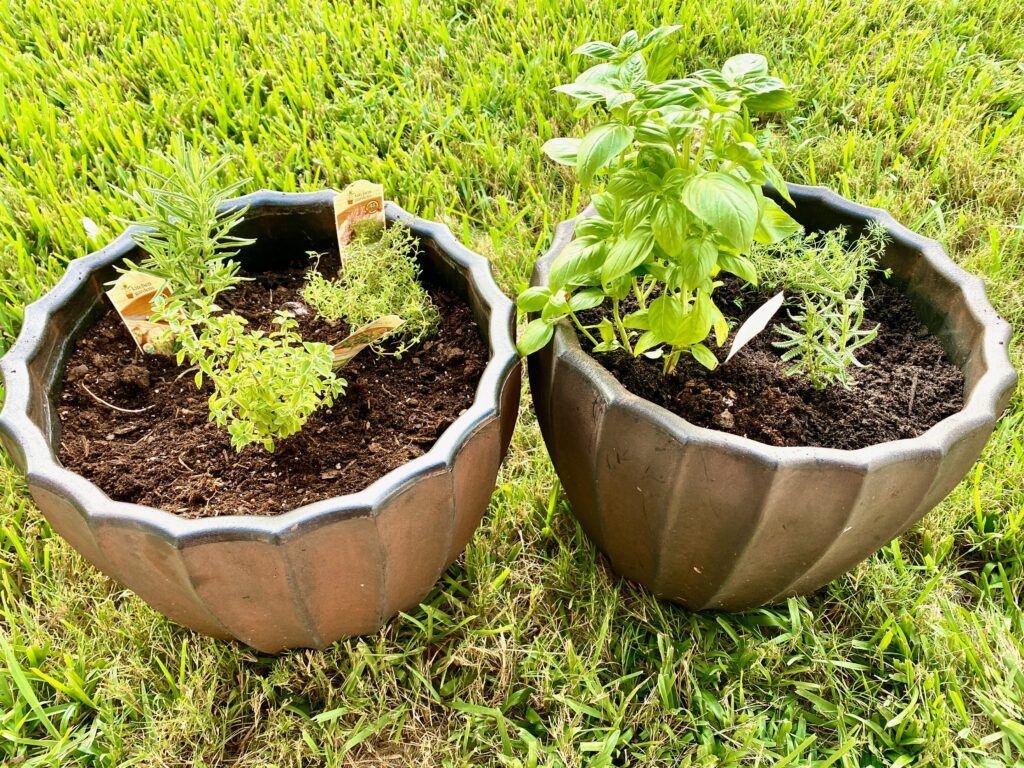
I look forward to stepping out onto my back porch in a few weeks to enjoy the delicious and fragrant herbs that I am growing right at my back porch. If you are looking for the ideal first growing project for your backyard, porch, balcony, or even a large windowsill.
